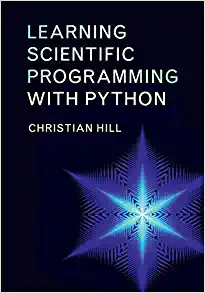Question
1. Babe Ruth swings with 200 N of force strikes a 1.5 kg ball for .05 seconds. How fast does the ball fly away if
1. Babe Ruth swings with 200 N of force strikes a 1.5 kg ball for .05 seconds. How fast does the ball fly away if the pitch was moving at 16 m/s?
2. A .2 kg soccer ball moving at 10 m/s strikes a .1 kg plant. After the collision, the plant moves forward at 20 m/s. What happens to the ball?
3. Paul Simon shoots a .2 kg puck at 25 m/s and Patrick Roy catches the puck for .3 seconds. How much force does Patrick Roy absorb?
4. A 20-kilogram mass moving at a speed of 3.0 meters per second is stopped by a constant force of 15 newtons. How many seconds must the force act on the mass to stop it?
5. Chris Drury (85 kg) skating west at 8 m/s collides with Rob Ray (90 kg) who is skating east at 6 m/s. The two hockey players stick together and fall to the ice. What is their velocity after the collision?
6. If a 54 Ns impulse (recall, impulse is force*time, so it is measured in Newtons*seconds) is given to a 6-kg object, then the transfer of momentum is ____________.
7. Applying a force for a longer time increases the change in _________.
8. A 200 kg cannon fires a 5 kg cannonball at 40 m/s. How fast does the cannon recoil?
9. A 2 kg bowling ball moving at 6 m/s strikes a 1 kg pin. After the collision, the pin moves forward at 10 m/s. What happens to the ball?
10. An object's momentum can be calculated by multiplying the velocity of the object by its _____.
11. Which object has the least momentum?
A. Object C: m = 0.5 kg, v = 1000 m/s
B. Object E: m = 11 kg, v = 4 m/s
C. Object B: m = 10 kg, v = 12 m/s
D. Object A: m = 1 kg, v = 100 m/s
E. Object D: m = 100
12. Bobby Orr takes a slapshot with a velocity of 38 m/s. He hits the .2 kg puck for .4 seconds. How much force does he use?
13. A firecracker is placed in the midst of a motionless cluster of billiard balls on a table. When the firecracker explodes, the balls scatter in all directions. The total momentum of the balls immediately after the explosion is (less than, greater than, equal to, or impossible to tell) than before the explosion.
14. When a golf club hits a golf ball, the change in momentum of the club is (less than, greater than, or equal to) the change in momentum of the ball.
15. Which block would require the smallest applied force to keep it moving at constant velocity?
answer those 15 typed out no files just those 15
Step by Step Solution
There are 3 Steps involved in it
Step: 1

Get Instant Access to Expert-Tailored Solutions
See step-by-step solutions with expert insights and AI powered tools for academic success
Step: 2

Step: 3

Ace Your Homework with AI
Get the answers you need in no time with our AI-driven, step-by-step assistance
Get Started


